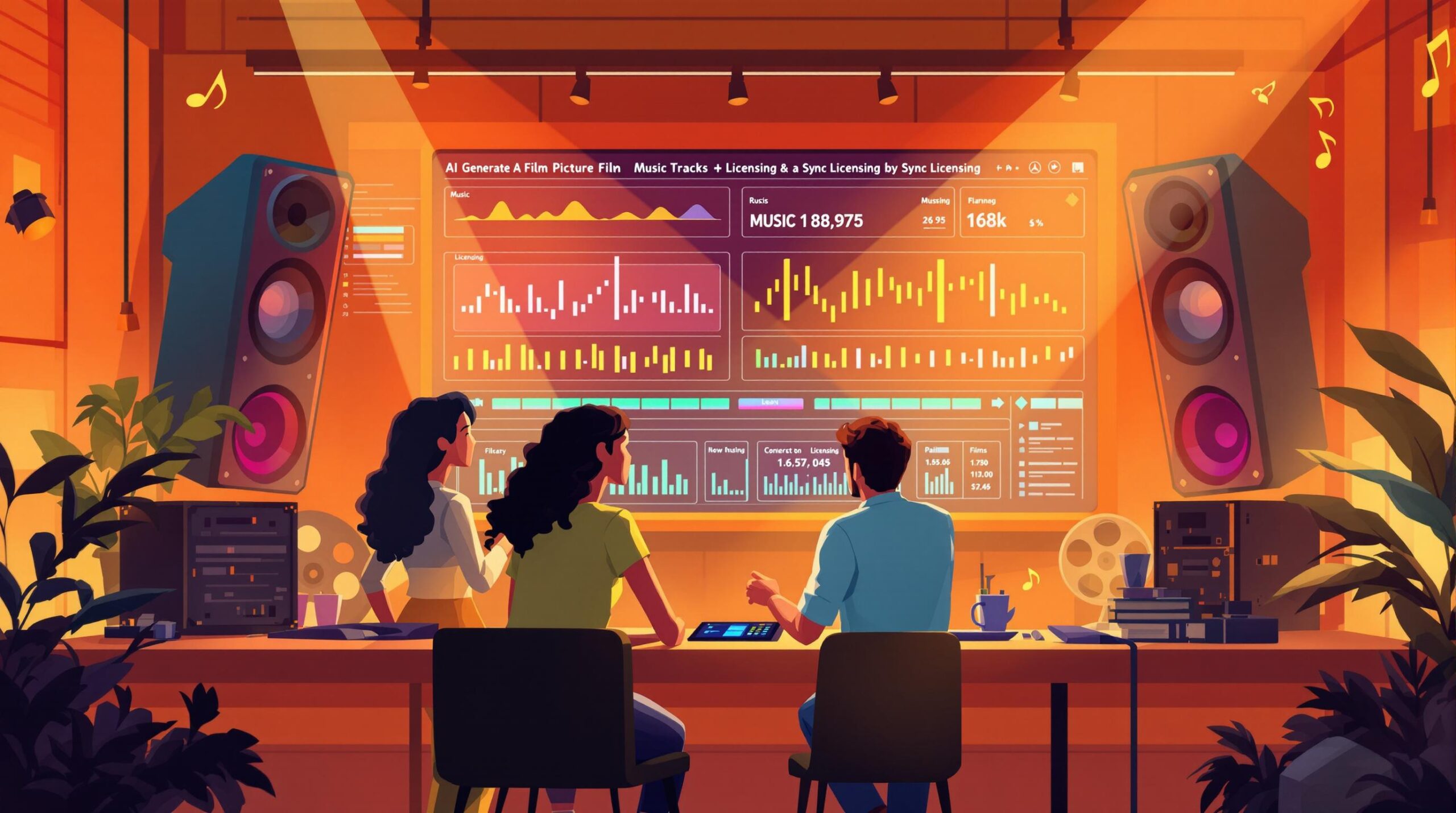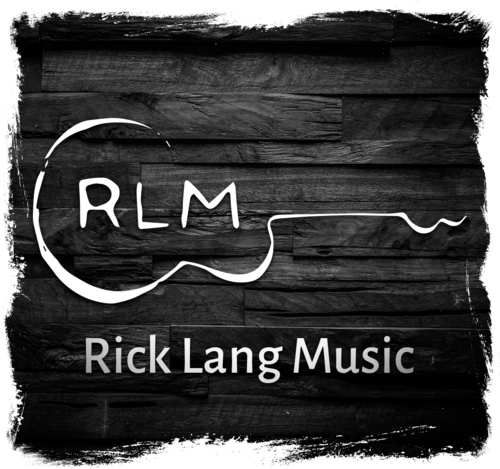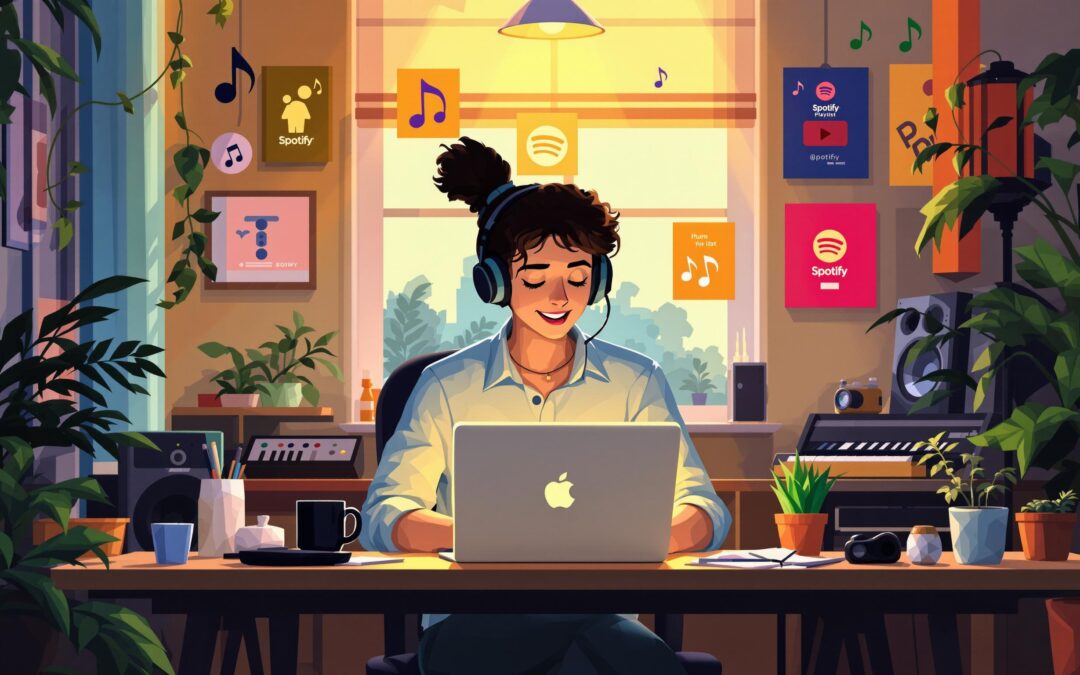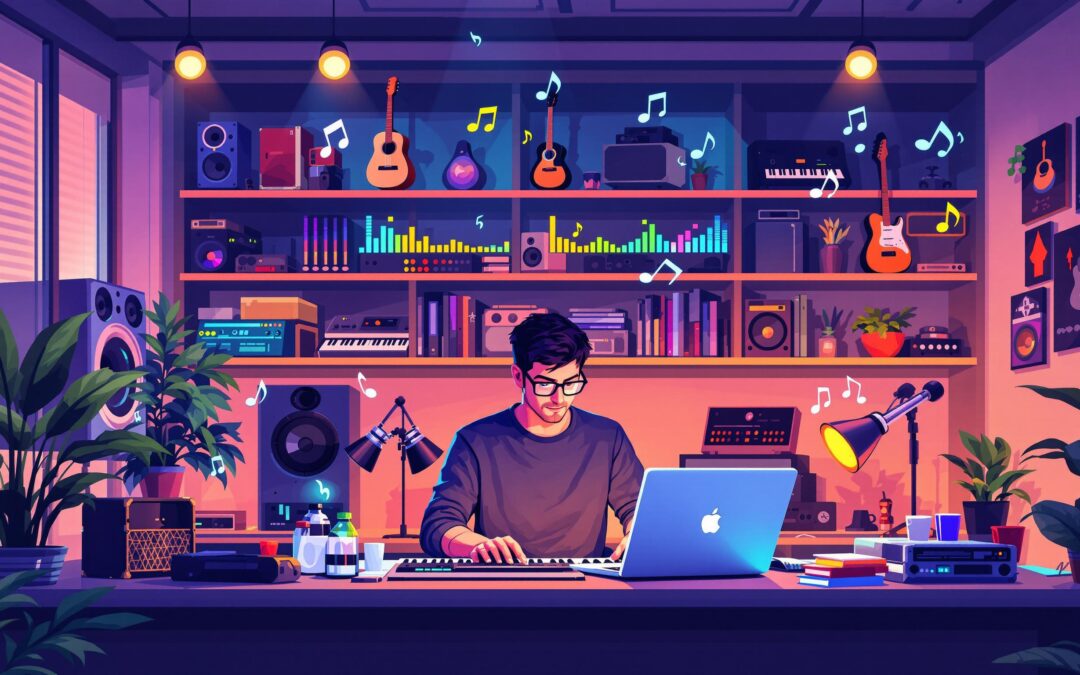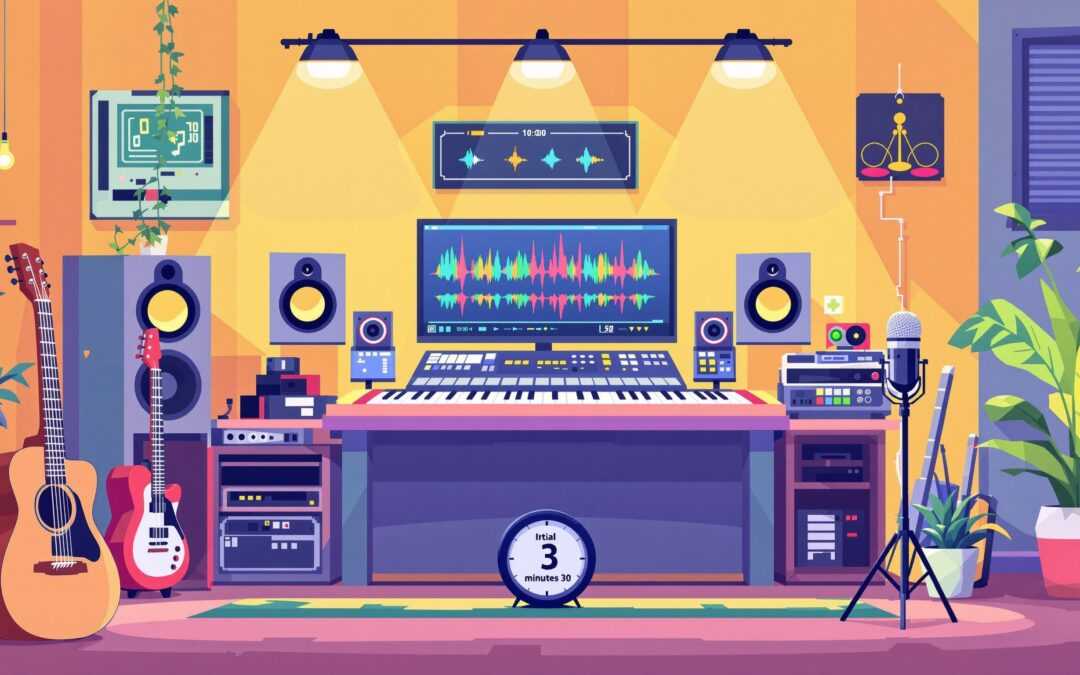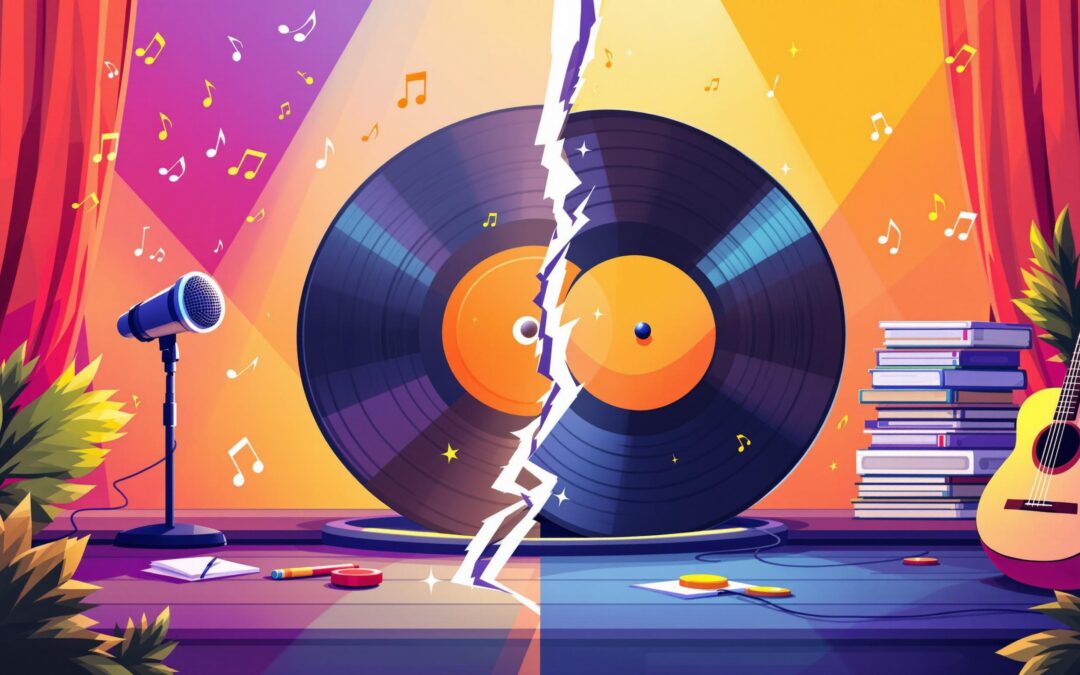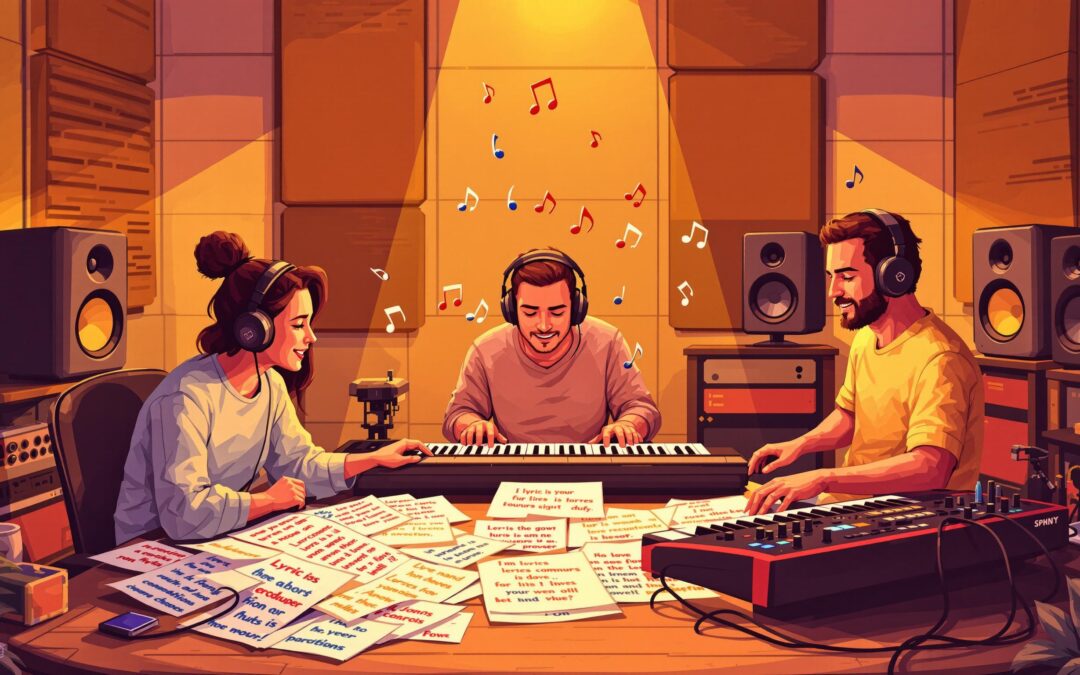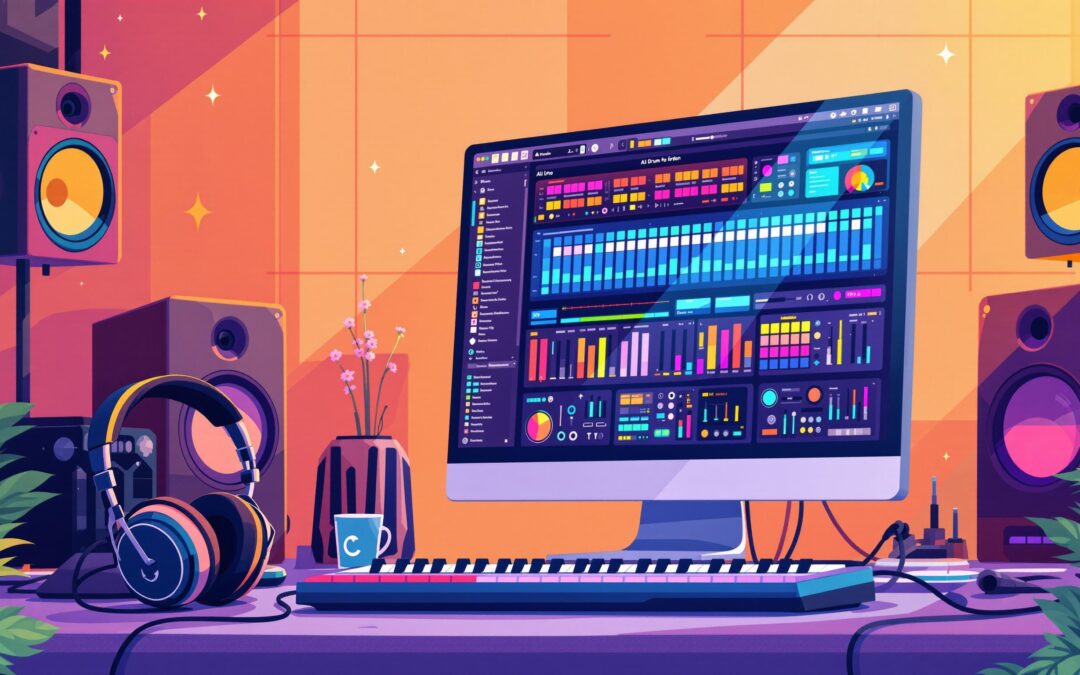Artificial Intelligence (AI) is changing how music is paired with visual content like films and TV shows. Here’s what you need to know:
- Faster Music Selection: AI tools analyze music libraries for tempo, mood, and instruments, speeding up the process of finding the right track.
- Cost Savings: Automation reduces expenses by simplifying tasks like permissions and rights management.
- Improved Rights Tracking: AI ensures accurate royalty payments and maintains detailed ownership records.
- AI-Generated Music: Custom tracks can now be created quickly, but they often lack the emotional depth of human-composed music.
Key Challenge: While AI is efficient, it struggles with creative judgment and understanding cultural or emotional nuances. The future lies in combining AI’s speed and precision with human creativity for better sync licensing outcomes.
AI Tools for Music Discovery
Music Analysis Methods
AI has reshaped how music is analyzed by breaking songs into measurable components such as:
- Tempo and rhythm: Identifying rhythmic patterns.
- Emotional mapping: Associating mood with musical elements.
- Instrument recognition: Pinpointing instruments and their roles.
- Dynamic range: Measuring changes in volume and intensity.
Modern AI systems can analyze large music libraries simultaneously, creating detailed profiles of each song’s features. This allows for more precise matching between music and specific scene needs.
Key Advantages
AI integration in sync licensing brings several benefits:
| Benefit | Result |
|---|---|
| Speed | Speeds up the music selection process. |
| Cost Efficiency | Automates tasks, potentially reducing licensing costs. |
| Accuracy | Improves how well music fits a scene by analyzing detailed parameters. |
| Accessibility | Opens opportunities for independent and emerging artists. |
This fine-tuned filtering also supports better rights management.
Current Limitations
AI tools, while advanced, still face challenges:
- Contextual Understanding: AI often misses subtle cultural or emotional nuances that humans easily detect.
- Creative Judgment: It lacks the intuition needed for unconventional or unexpected music choices.
- Quality Evaluation: Assessing subjective aspects like production value remains difficult for AI.
These challenges highlight that AI serves as a helpful tool to enhance, not replace, human expertise in sync licensing.
AI vs. Human Composers: The Future of AI in Sync Licensing
Rights Management Through AI
AI isn’t just transforming music discovery – it’s also reshaping how rights are managed in sync licensing.
Rights and Ownership Tracking
AI-powered platforms help maintain detailed databases of song ownership, publishing rights, and licensing history. These systems verify critical details, such as:
- Split sheets: Documents listing all rights holders and their ownership percentages
- Territory rights: Permissions for licensing across different regions
- Usage history: Records of when and where songs have been licensed
- Chain of title: Documentation of ownership changes over time
This automated approach simplifies tracking and sets the stage for smarter contract solutions.
Smart Contract Systems
AI-driven smart contracts make sync deals faster and easier by handling negotiations, verifying rights, and creating agreements with minimal manual effort. They also play a role in improving how payments are handled.
Automated Royalty Systems
AI ensures rights holders are paid accurately and on time through systems that handle:
- Real-time payment processing: Payments are triggered immediately when music is used in films, TV shows, or other media.
- Usage monitoring: Tracks broadcasts and streams to calculate royalties precisely.
- Payment distribution: Divides payments among rights holders based on their ownership shares.
These tools improve both the efficiency and accuracy of royalty payments within the sync licensing process.
sbb-itb-1c6af30
AI Music Creation for Sync
AI-powered music composition tools are changing the way creators approach sync licensing for film and TV projects. These tools are reshaping how music is made to fit visual content.
Current AI Music Tools
AI music platforms have become highly capable of creating custom tracks tailored for film and TV. They analyze existing musical patterns and generate compositions that match specific moods, tempos, and styles required for visual projects.
Some key features include:
- Real-time adjustments: AI can modify tempo, intensity, and arrangement to align with scene changes and emotional shifts.
- Genre and style alignment: Algorithms can produce music that fits specific genres or mimics artist styles while aiming to avoid copyright conflicts.
- Customizable inputs: Users can specify parameters like length, mood, instrumentation, and more to shape the final track.
These advancements raise questions about how AI compares to traditional composition methods.
AI vs. Human Music
When comparing AI-generated music to human-composed tracks, there are clear pros and cons:
| Aspect | AI-Generated Music | Human-Composed Music |
|---|---|---|
| Cost | Lower, with flat-rate licensing | Higher, due to composer and musician fees |
| Speed | Can be created in minutes to hours | Takes days to weeks for full production |
| Customization | Limited to algorithmic settings | Offers broader creative possibilities |
| Emotional Depth | Often lacks subtlety in expression | Provides richer emotional nuance |
| Rights Management | Evolving and uncertain | Governed by established legal systems |
Legal Framework
The legal aspects of using AI-composed music in sync licensing are still evolving. Several important factors influence the current framework:
-
Copyright Ownership
Determining who owns the rights to AI-generated music is complex. Existing copyright laws are designed for human creators and don’t clearly cover AI authorship, leading to uncertainty in sync licensing agreements. -
Licensing Requirements
When licensing AI-generated music, agreements should include:- Documentation of AI’s role in the creation process
- Defined usage rights and territorial restrictions
- Clauses for liability in case of copyright disputes
- Terms for handling derivative works or modifications
-
Transparency
Industry standards increasingly call for disclosing the use of AI in music creation. Transparency is essential to maintain trust with audiences and ensure fair dealings in sync licensing.
As AI tools continue to develop, the industry will need clearer legal guidelines to address these challenges.
What’s Next for AI in Sync
Expected Changes
AI’s role in sync licensing is set to grow, making processes like music selection, licensing, and royalty tracking faster and more accurate. By analyzing the connection between visuals and audio, AI will help match music to content more effectively and simplify royalty management. These advancements aim to bring together human expertise and AI-driven efficiency.
Human-AI Collaboration
The future of sync licensing will rely on a mix of AI tools and human creativity. While AI takes care of technical and repetitive tasks, experts will focus on adding creative and strategic value. Key areas of collaboration include:
- Creative Decision-Making: AI can suggest music options based on technical criteria, leaving humans to fine-tune selections with artistic judgment.
- Rights Management: Routine tasks like sorting licenses can be automated, freeing up experts to handle more complex negotiations.
- Quality Control: Human oversight ensures AI recommendations align with cultural, artistic, and industry standards.
Conclusion: Making AI Work in Sync
AI is transforming sync licensing by blending technical precision with human creativity. The best results come from combining AI’s strengths in tasks like catalog analysis and rights tracking with the expertise of professionals who handle creative decisions and complex negotiations.
How to Put It Into Practice
To get the most out of AI in sync licensing, consider these steps:
- Use AI tools to streamline initial music selection but keep the final say in creative choices.
- Adopt automated systems for rights management to ensure accurate royalty tracking.
- Document AI’s role in music creation to maintain transparency and clarity.
Balancing Legal and Creative Aspects
As AI continues to evolve, staying legally compliant is more important than ever. Musicians should understand how copyright laws apply to AI-assisted creations. Write.Record.Release. offers resources to help artists navigate issues like co-writing agreements and managing rights when using AI tools.
This approach ensures that technology and artistry can thrive together, creating a balanced and efficient future for sync licensing.
Looking Ahead
Leverage AI to streamline workflows while preserving the irreplaceable value of human insight. This balance will keep sync licensing both efficient and creatively fulfilling as AI continues to shape the industry.
